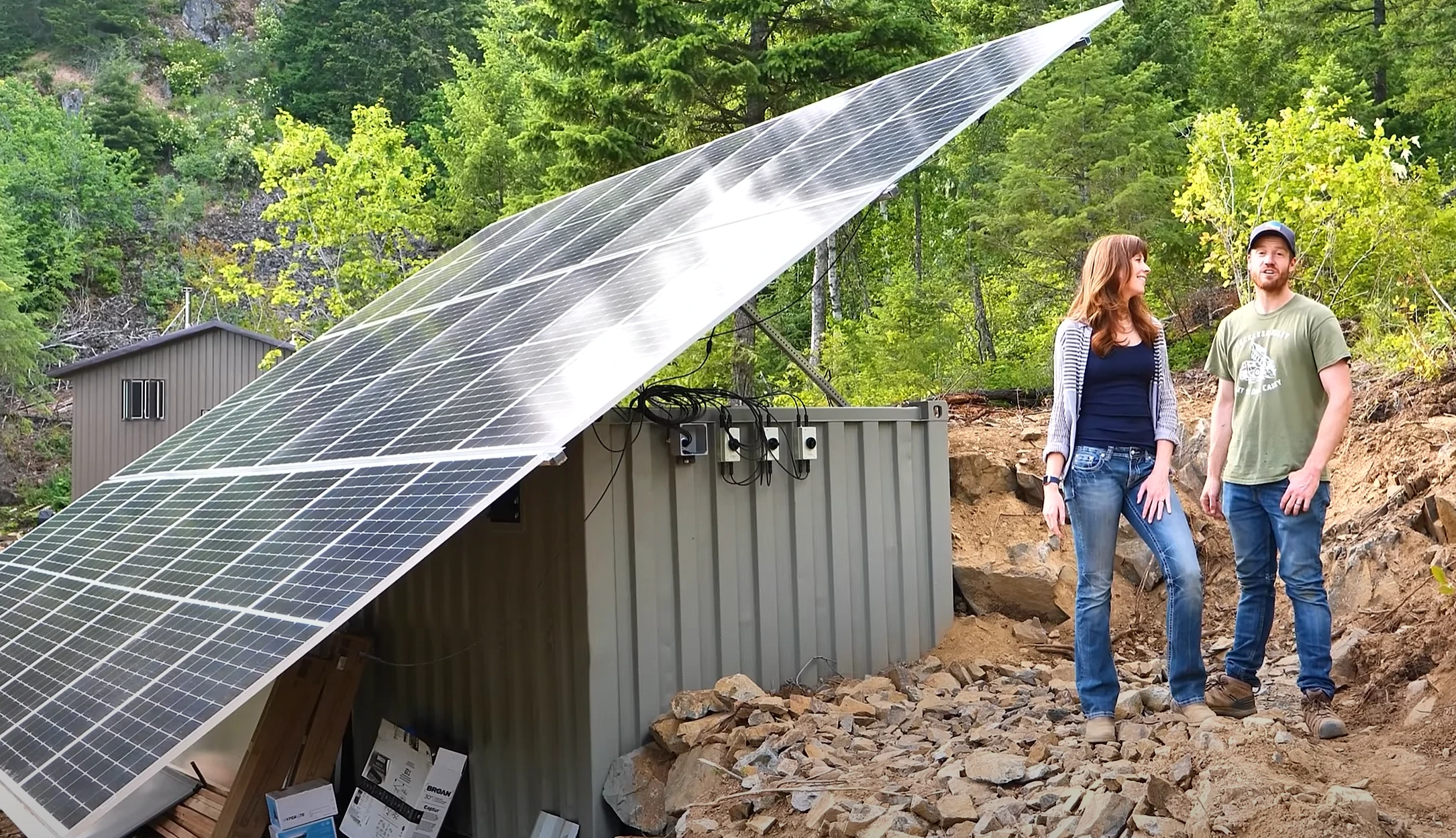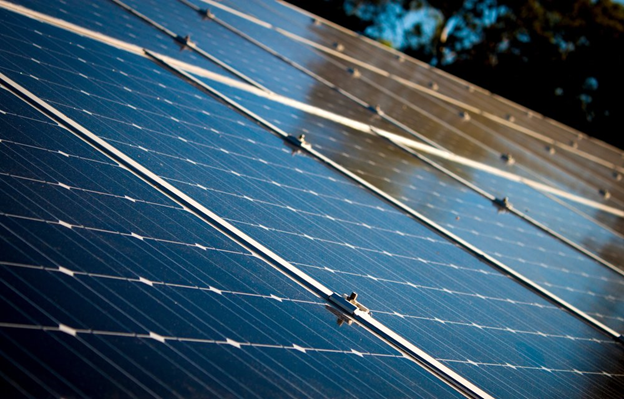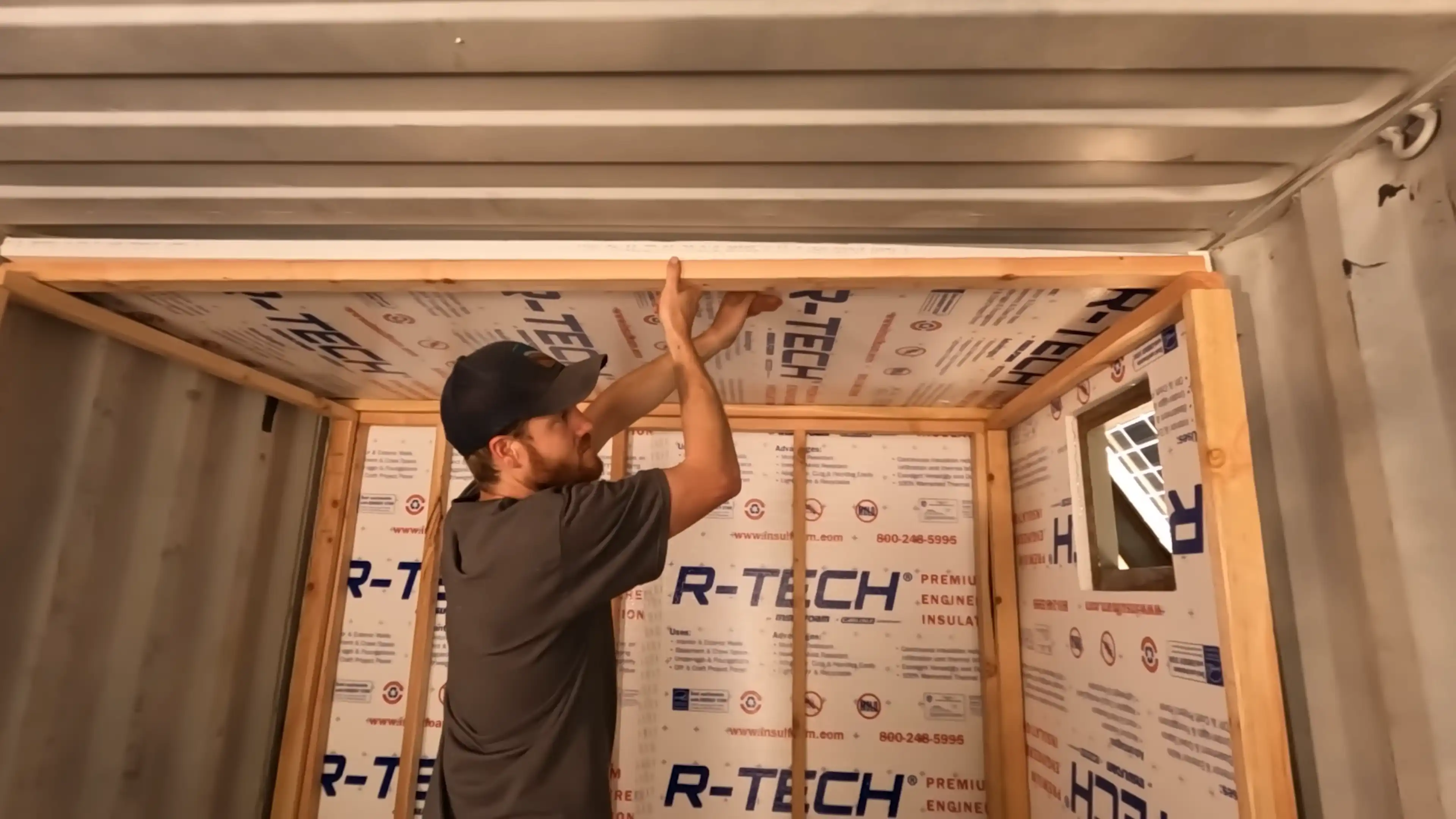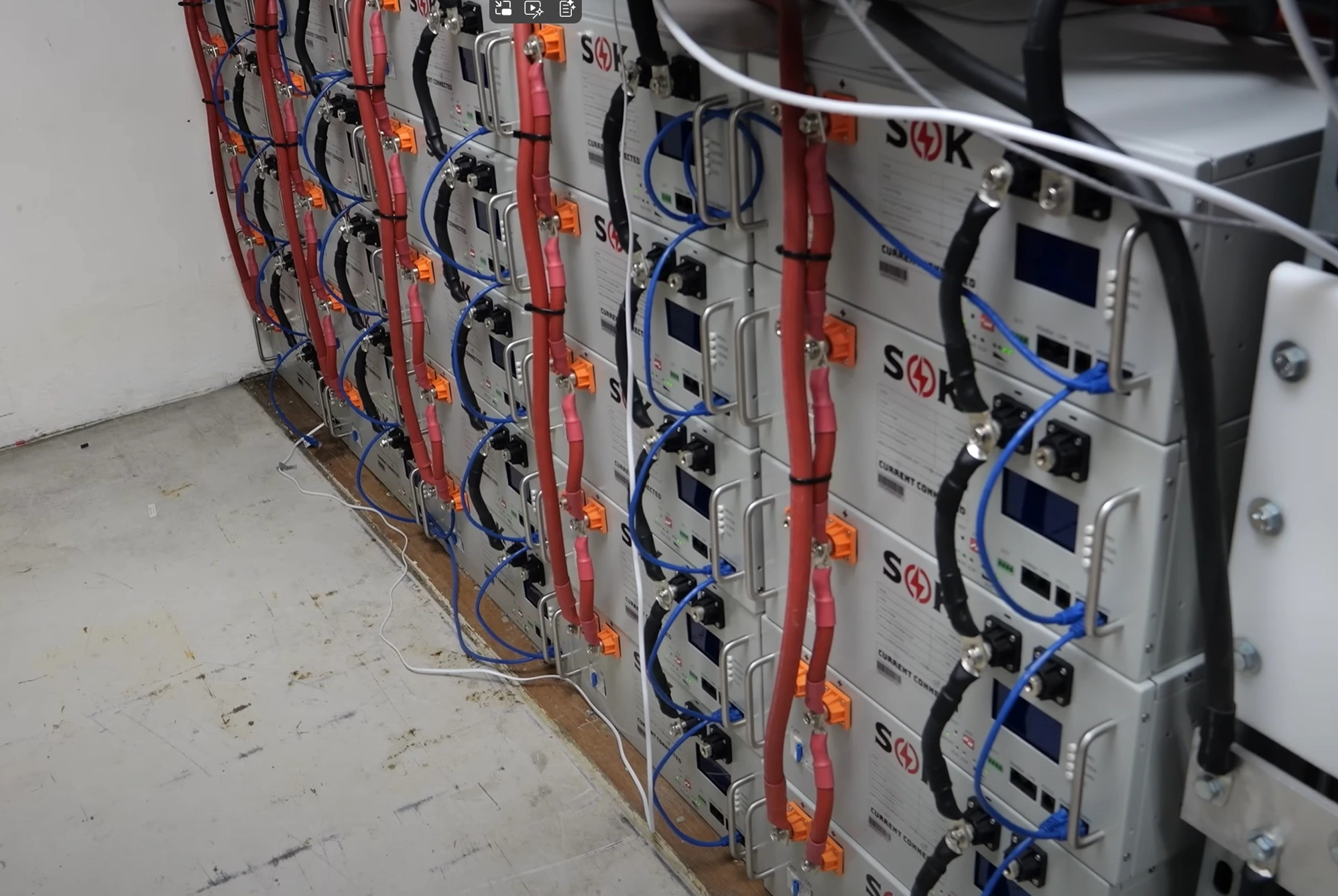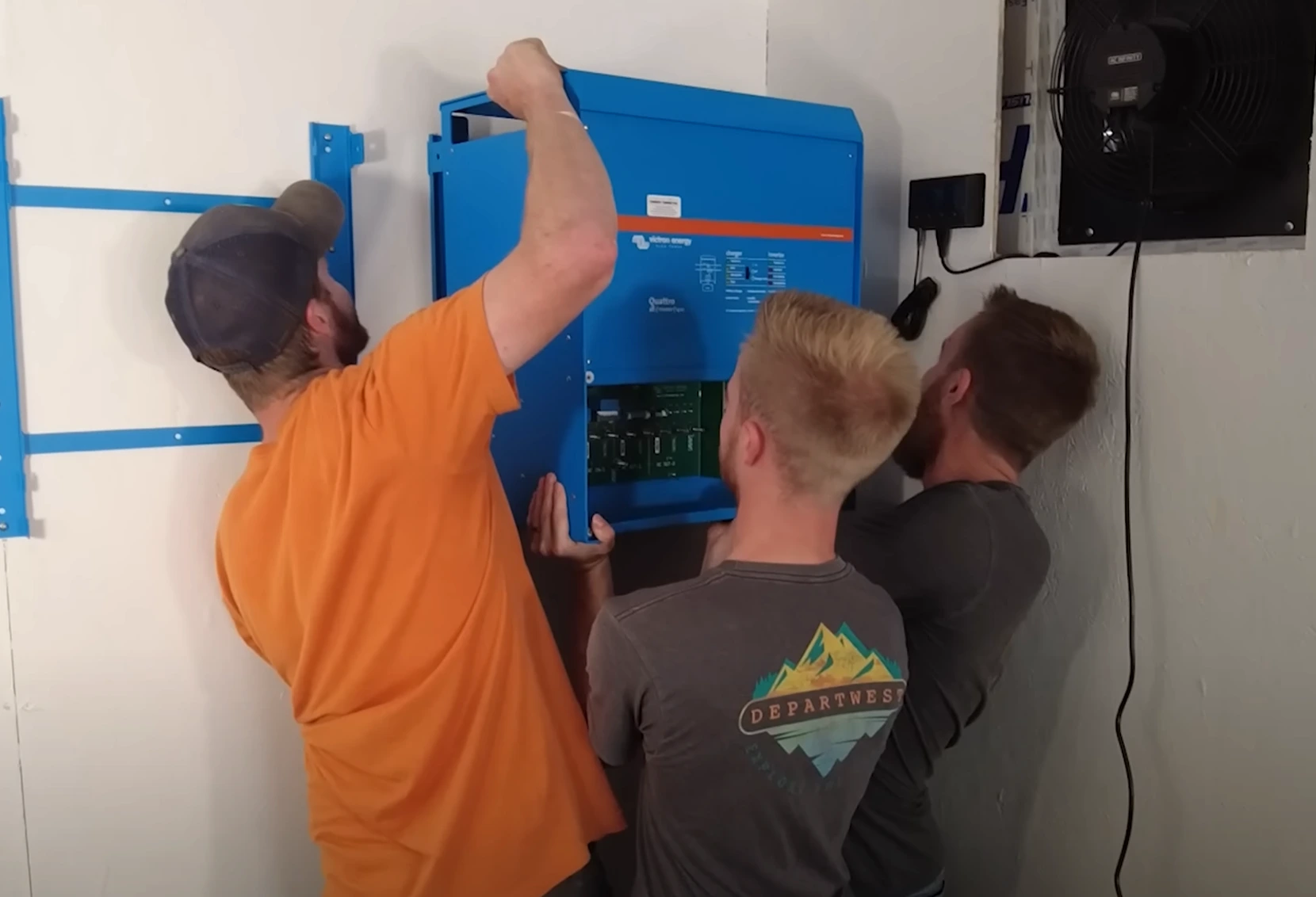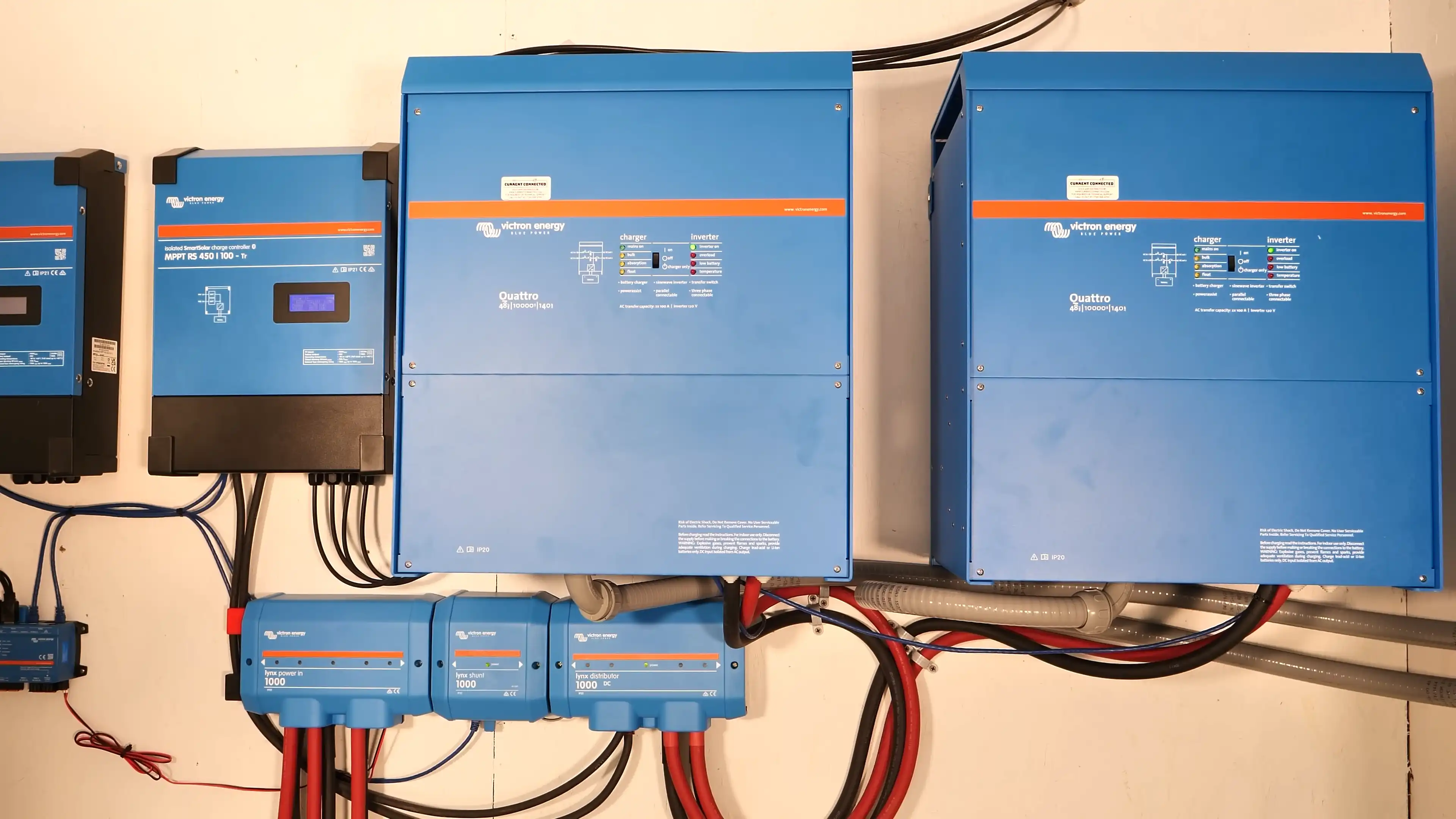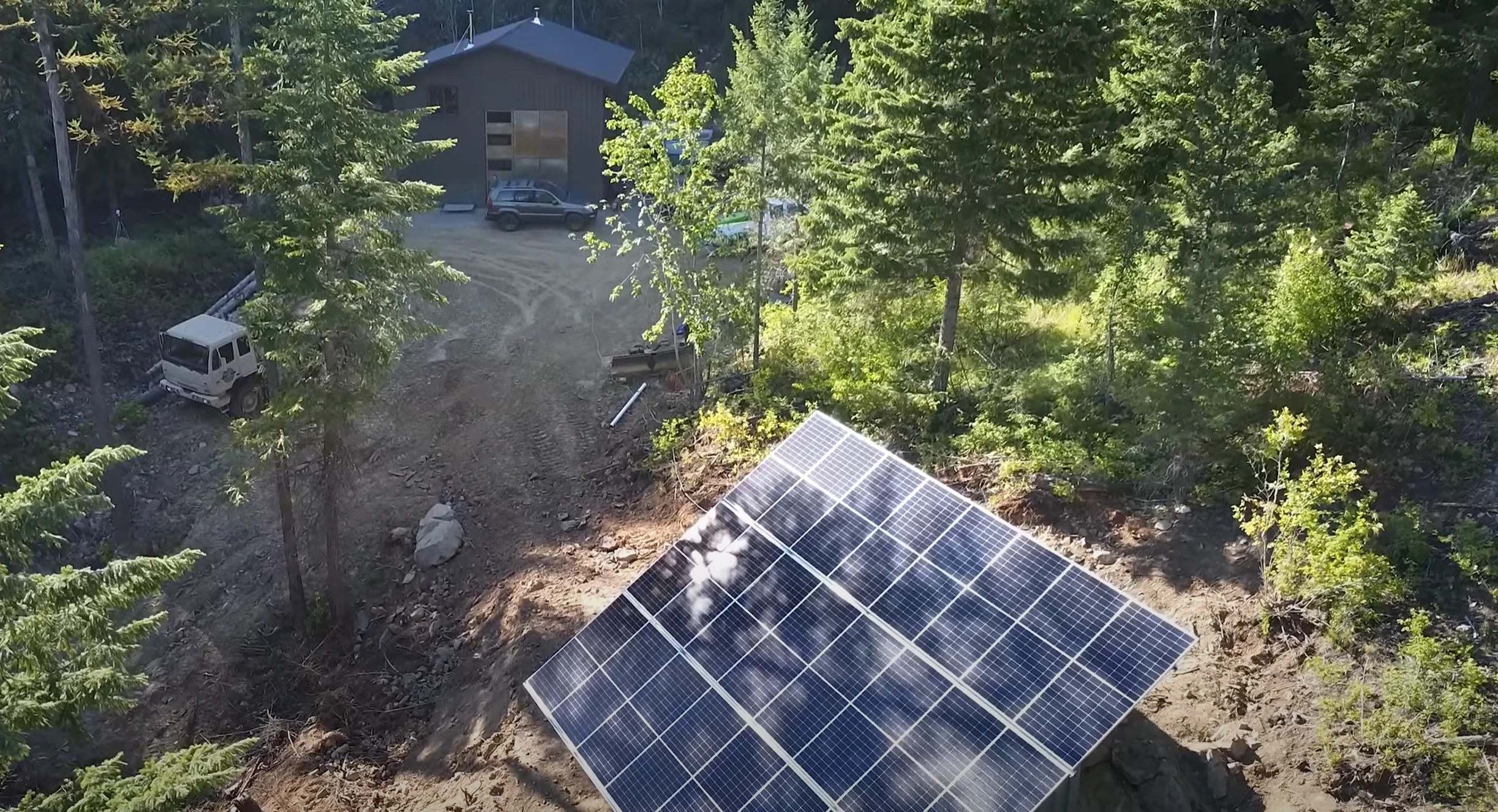Off-Grid Power System: Building a 20kVA Setup in North Idaho
Riley and Courtney had a problem. They built a 30×40 foot pole barn on 20 acres in North Idaho, fully off the grid. Their woodworking, welding, and fabricating tools needed reliable power, something other than the noisy generator they’d used for over a year. It was time for a change and a better solution.
They approached Current Connected, and we engineered a residential style power system able to run their entire property. This system provided power for all their needs, even their most demanding tools, and they no longer needed their generator.
Let’s inspect their system and see how each component works.
Solar Array Design
The solar array provides the foundation for any off-grid system. This installation uses 24 Canadian Solar 445W bifacial solar panels attached to a 20 foot shipping container.
Bifacial panels offer a distinct advantage in North Idaho’s snowy climate. When snow covers the face of the panel, the back still absorbs any sunlight reflected off the ground. The reflected light generates electricity and heat, which helps to melt accumulated snow.
The mounting structure adjusts from 35 to 60 degrees to maximize solar production in every season. During winter months, the panels sit at 60 degrees to shed snow and face the low sun angle. In the other months, the panels sit at 35 degrees to account for the higher sun angle. These are the optimal angles for their system, and this flexibility ensures maximum energy production throughout the year.
Three strings of eight panels make up the solar arrays. This configuration allows for high voltage solar charging, with each string producing just under 450Vdc open circuit voltage in winter.
Charge Controllers and Power Management
All 24 panels feed into Victron MPPT RS solar controllers, and the system has space for expansion. Each MPPT RS controller handles up to 450Vdc input and provides 100A output, which translates to approximately 5.5kW of solar for each controller.
Each MPPT RS controller has two inputs, and as the system currently uses only three strings, there is room for a fourth.
Riley and Courtney installed the charge controllers inside the shipping container, which is framed with 2×3 studs and insulated with R-Tech insulation. Additional plastic sheeting and water resistant paint prevent moisture intrusion to protect the sensitive electrical equipment.
Battery Storage
Energy storage is critical for off-grid systems. This installation uses 12 SOK 48V 100Ah server rack battery packs, totaling just over 60kWh of storage. These batteries have a maximum discharge rate of 60kW, giving Riley and Courtney more than enough power to operate multiple high powered tools simultaneously.
The Victron Lynx Distribution System connects all components to the batteries. This three component system includes the Lynx Power In which combines all battery packs, the Lynx Distributor which contains all fuses for the solar controllers and inverters, and the Lynx Shunt which monitors the battery status and houses the main 500Adc fuse.
The Lynx Shunt monitors all power going into or coming out of the battery bank. Some batteries may not notice small current draws over time, especially when the current is split up between many batteries. This can cause the SOC% to drift and reflect an inaccurate percentage. The Shunt sees all current to or from the battery banks and calculates the remaining capacity, regularly resetting itself as the batteries charge fully. This allows for more accurate readings over time.
Inverter Selection
Two Victron Quattro 10kVA inverters handle power conversion. These massive units provide 20kW continuous output and up to 40kW surge capacity for loads with high startup demands.
The Quattro inverters use a low frequency, transformer based design. This was specifically chosen for Riley and Courtney’s needs. Their CNC plasma table, plasma unit, large air compressor, and other tools create substantial inrush current when they start. The transformer stores enough momentum to handle these big hits without the system stumbling or shutting down.
The inverters connect with premade 4 foot, 4 AWG cables hydraulically crimped at 10,000psi to ensure reliable, low resistance connections. It’s possible to include additional inverter units as power needs grow. Should this happen, Riley and Courtney will use cables of equal length to maintain proper load sharing.
Distribution and Output
After the DC power passes through the inverters and becomes AC power, it travels through 1in conduit to an electrical distribution box, which is Riley and Courtney’s main electrical panel. From there, it powers everything from the shop to their house.
Why These Components Work Together
Every component in this system addresses Riley and Courtney’s specific needs. The adjustable solar array maximizes year round production in a challenging climate. The high capacity battery bank provides ample energy for multiple days. The low-frequency inverters handle demanding motor loads without interruption.
Most importantly, the system is built for expansion. Additional solar strings, more battery capacity, and extra inverters can all be added as needed. Quality components and proper design mean this system will meet Riley and Courtney’s needs for years to come.
Off-Grid Power for Real Work
Off-grid living doesn’t mean compromising available power. Proper system design and quality components make it possible to run professional tools and equipment without the grid. Riley and Courtney’s system proves that off-grid power can support serious work, not just basic necessities.
The key is matching system capacity to actual needs, building in room for growth, and selecting components that work together. A well designed off-grid system provides reliable power without the noise, fuel costs, or maintenance of a generator.
For anyone considering an off-grid power system, whether for a workshop, homestead, or remote property, proper planning makes all the difference. Understanding power requirements, choosing appropriate components, and working with experienced system designers ensure success from day one.
We specialize in both off-grid and on-grid power systems, providing all necessary components including batteries, inverters, and everything in between. Quality system design turns the dream of energy independence into reliable, everyday reality.
Contact us today to start your dream build.

